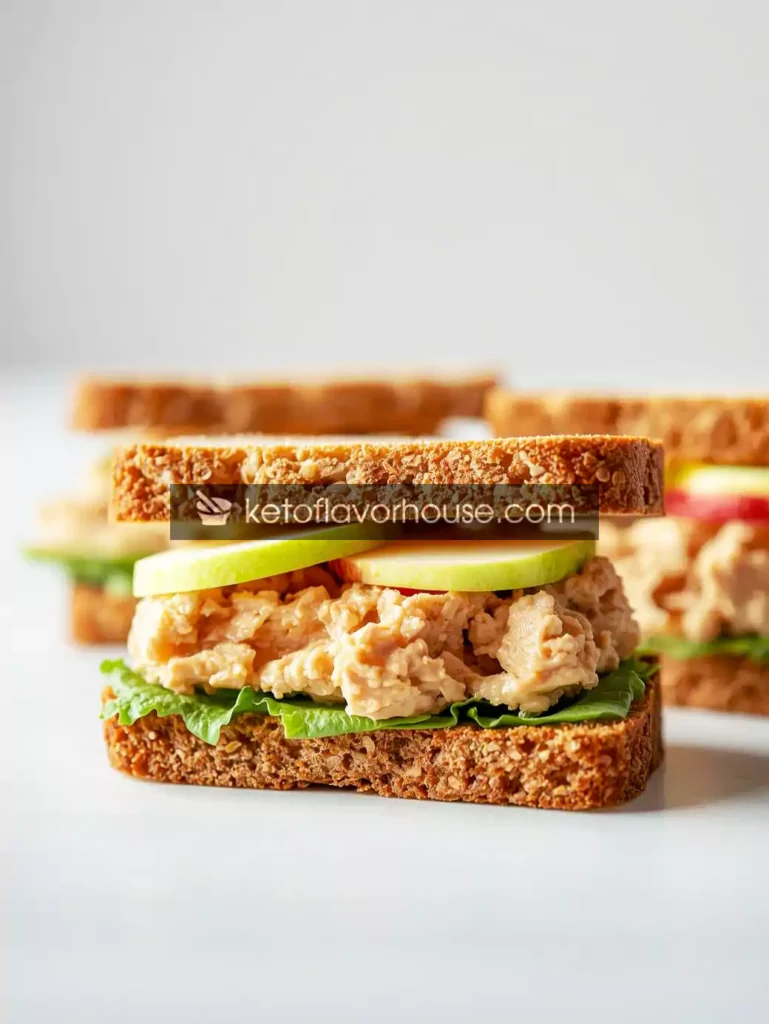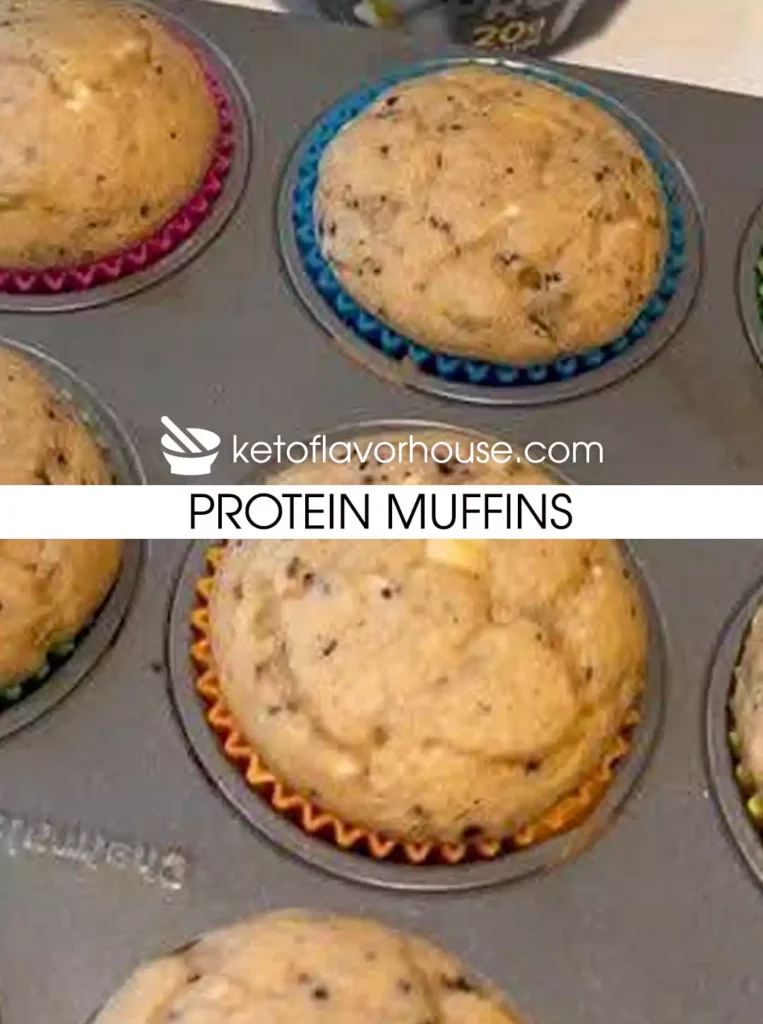This post may contains Amazon affiliate and other affiliate links. If you make a purchase through these links, I may earn a small commission at no extra cost to you. Your support helps me continue to provide quality content. I only recommend products I personally trust and believe will add value to your experience. For more details, please visit my Privacy Policy.
Introduction
The first time I tried to replace mashed potatoes after surgery, I thought I’d be settling for second best. Then I discovered the magic of a Bariatric Cheesy Mashed Cauliflower Bowl – Single Serve, Low-Carb & High-Protein and everything changed. Creamy, warm, and just a touch savory, this single-serve mash gives you the comfort of a bowl of mashed potatoes without the heavy carbs — and with a protein boost that actually helps keep you full. It’s the kind of side (or mini-meal) I reach for on chilly nights, when I want something soothing but still aligned with my bariatric goals.
This recipe is built with post-op needs in mind: soft texture for easy chewing and slow eating, small portion size so you don’t overfill your stomach, and high protein to support healing and satiety. Best of all, it actually tastes indulgent—think silky cauliflower, a hint of garlic, melty cheese, and a whisper of lemon—without derailing your day.
Why You’ll Love This Recipe
- 🥣 Single-serve comfort — a perfect portion for post-op or anytime you want a small, satisfying bowl.
- 🧀 Cheesy, creamy texture — feels indulgent but stays low in carbs.
- 💪 High-protein — packs ~31 g protein per serving (see nutrition box) to support bariatric needs.
- 🕑 Fast to make — microwave, stovetop, or roast: you choose the method.
- 🌿 Versatile — swap herbs & cheeses to keep it interesting.
My Personal Experience
There was a morning a few months after surgery when I was craving the familiar hug of mashed potatoes but panicked at the idea of all that starch. I steamed cauliflower on a whim, blended it with a spoonful of Greek yogurt, and topped it with a sprinkle of cheese. The first spoonful was surprising — warm, velvety, and oddly nostalgic. Over the next few weeks I refined the ratio, added an egg for extra protein, and learned that a tiny bit of olive oil and Parmesan deepened the flavor in ways that felt luxurious. What started as “making do” turned into a staple that I now make when I want comfort food without the carb hangover.
Required Equipment
Small Steamer Basket or Microwave-Safe Bowl
A steamer basket gives the softest, moist cauliflower without waterlogging. Microwave steaming works perfectly for single-serve convenience.
Hand Blender or Food Processor
To achieve silky smoothness quickly. If you don’t have one, a potato masher and vigorous stirring work — you’ll get more texture but still delicious results.
Measuring Spoons & Kitchen Scale
Portion control is important for bariatric eating; a simple kitchen scale helps keep servings consistent.
Small Saucepan or Nonstick Skillet (optional)
If you choose the stovetop method to sauté garlic or finish the mash, a small pan will do the job beautifully.
Serving Bowl
A single-serve bowl that feels cozy makes the meal more satisfying and helps with mindful eating.
Ingredients & Substitutions (Single Serve)
- Cauliflower florets — 300 g (about 3 cups raw)
- Why it matters: Low in carbs, high in volume, softens easily — the perfect base for a single-serve mash.
- Substitute: Broccoli (similar texture but stronger flavor) or parsnip (higher carbs).
- Large egg — 1
- Why it matters: Adds creaminess, binding, and ~6 g high-quality protein.
- Substitute: 2 egg whites for lower fat or 2 tbsp silken tofu (blended) for dairy-free protein.
- Nonfat Greek yogurt — 100 g (about 3.5 oz)
- Why it matters: Creamy texture and a protein punch without added fat.
- Substitute: Low-fat cottage cheese (blended smooth) or unsweetened dairy-free yogurt (note lower protein).
- Part-skim shredded mozzarella — 30 g (≈1 oz)
- Why it matters: Melts beautifully and gives that familiar cheesy comfort.
- Substitute: Low-fat cheddar or a sprinkle of nutritional yeast for dairy-free savory bite.
- Olive oil — 1 tsp (optional)
- Why it matters: Adds mouthfeel and helps fat-soluble vitamins absorb. Use sparingly.
- Substitute: 1 tsp butter (adds flavor but more saturated fat) or skip altogether to lower calories.
- Grated Parmesan — 5 g (about 1 tsp)
- Why it matters: Sharp umami that makes the mash taste “done” even in small amounts.
- Substitute: A pinch of nutritional yeast for vegan option.
- Garlic powder — 1/8 tsp (or 1 small clove fresh, minced)
- Why it matters: Brightens the savory profile without extra bulk.
- Substitute: Shallot powder or a pinch of onion powder.
- Salt & black pepper — to taste (use sparingly)
- Why it matters: Enhances flavor; remember cheese already adds sodium.
- Fresh chives or parsley — small pinch, for garnish
- Why it matters: Adds freshness and visual contrast.
How to Make Bariatric Cheesy Mashed Cauliflower Bowl — Step-by-Step
H2: Bariatric Cheesy Mashed Cauliflower Bowl – Single Serve, Low-Carb & High-Protein
Step 1 — Cook the Cauliflower
Choose your method:
- Microwave (fastest): Place 300 g cauliflower in a microwave-safe bowl with 2 tbsp water, cover, and microwave 6–8 minutes until fork-tender. Drain excess water.
- Steamer: Steam 8–10 minutes until very tender.
- Roast (deeper flavor): Toss florets with 1 tsp oil, roast at 425°F for 18–22 minutes until edges brown; roast gives the mash nuttier notes but adds time.
Mini-tip: If the cauliflower looks watery after steaming, let it sit in a sieve for a minute to drain — drier florets make a creamier mash.
Step 2 — Blend with Protein & Creaminess
Transfer hot cauliflower to a small processor or use a hand blender in the bowl. Add 1 large egg, 100 g nonfat Greek yogurt, 1 tsp olive oil, and 1/8 tsp garlic powder. Blend until silky smooth. If using fresh garlic, sauté it briefly in a tsp of oil before adding for a sweeter garlic flavor.
Encouragement: Don’t worry if the first whirl is a little chunky — pulse and scrape the sides and it will smooth out.
Step 3 — Add Cheese & Seasoning
Stir in 30 g shredded mozzarella and 5 g grated Parmesan. Season gently with salt and pepper, remembering cheeses already contain sodium. If the mixture seems too runny, add a tablespoon of almond flour or a small spoon of cream cheese to thicken (this will affect nutrition).
Step 4 — Finish & Serve
Spoon into a warm single serve bowl, sprinkle chopped chives or parsley, and enjoy slowly. The mash is comforting warm and keeps its texture best when eaten right away.
Variants & Method Notes
- Stovetop skillet: Steam or boil cauliflower, then mash in saucepan and finish with yogurt and cheese on low heat. Stir continuously to avoid sticking.
- Air fryer roast + mash: Roast florets first for caramelization, then mash — great for depth of flavor.
- Dairy-free: Replace cheese with nutritional yeast and use blended silken tofu instead of Greek yogurt. Protein will be lower unless you add a scoop of plant protein powder (unflavored).
- Extra-protein trick: Stir in 15 g unflavored whey protein isolate after blending (do this off the heat and mix quickly) — it dissolves and boosts protein while keeping texture smooth.
Common Mistakes to Avoid
- Using undercooked cauliflower: results in grainy mash. Cook until very tender.
- Adding too much liquid: makes the mash soupy rather than creamy — drain well and adjust yogurt amount.
- Over-blending with high heat: can make the cauliflower gummy; blend quickly and stop to test texture.
- Over-salting: cheeses bring sodium — taste before adding extra salt.
Pro Tips for Best Results
- For the creamiest texture, blend while the cauliflower is hot — heat helps the yogurt and egg incorporate smoothly.
- Use a combination of Greek yogurt + a single egg for both creaminess and protein without excess fat.
- If you want a silkier mouthfeel without dairy, add 1 tbsp silken tofu and a little olive oil.
- Toast a few almond slivers and sprinkle on top for crunch and a boost of healthy fats (watch calories).
Bariatric Nutrition & Strategy
This single-serve bowl was designed specifically for bariatric dietary goals. It emphasizes protein — essential for preserving lean mass and supporting recovery — while keeping net carbs low so you avoid rapid blood sugar swings and the discomfort that can follow high-starch portions. The soft, spoonable texture makes it easy to chew and eat slowly, which helps with satiety cues and prevents overfilling the stomach. Portion control is built into the recipe (single serve), making it a safe and satisfying choice for breakfasts, sides, or light dinners.
Macro snapshot (estimated per single serving):
- Calories: ~352 kcal
- Protein: ~31.2 g
- Fat: ~18.2 g
- Total Carbs: ~20.1 g
- Fiber: ~6.0 g
- Net Carbs: ~14.1 g
- Sugar: ~9.9 g
- Sodium: ~447 mg
(Nutrition estimates assume the ingredient amounts listed above; values may vary with brands — use your own labels to get precise clinical tracking.)
Variations You Can Try
- Herbed Garlic Mash: Add minced rosemary and thyme for savory depth.
- Buffalo-Style Swap: Fold in 1 tsp hot sauce and top with a small sprinkle of blue cheese for tang (adds sodium).
- Italian Flare: Mix in sundried tomato bits and basil; use a little mozzarella and grated Pecorino.
Each variation slightly shifts macros, so track if you’re counting.
Tips for This Recipe
- Eat slowly and stop when you feel satisfied — the high protein helps signal fullness.
- Use this mash as a side with grilled fish or chicken slices for a complete bariatric meal.
- Make double and refrigerate components separately (cauliflower and yogurt mix) and reheat briefly for quick reheats.
Optional Additions
- Cooked shredded chicken (30–50 g): raises protein significantly and turns the bowl into a full meal.
- A scoop of collagen or whey isolate: up to 15 g, stirred in off-heat for an extra protein boost.
- A few roasted garlic cloves: deepen flavor without overpowering.
Serving Ideas & Occasions
- Comfort dinner side: serve with broiled fish and steamed greens.
- Light lunch: top with a poached egg and pepper flakes.
- Meal prep: pack in a microwavable container for an easy single-serve lunch.
Storage Recommendations
- Fridge: keep in an airtight container up to 48 hours; texture best when fresh.
- Freeze: not recommended — texture changes after thawing.
- Reheat: warm gently in microwave at 50% power or reheat in a small pan with a splash of water to loosen texture.
Frequently Asked Questions (FAQ)
1. Can I make this ahead and reheat later?
Yes — store in the fridge up to 48 hours. Reheat gently and stir to revive creaminess. Avoid freezing.
2. Is this recipe safe in early post-op stages?
Check with your bariatric team. This mash is soft and easily chewed, but eggs and dairy are typically reintroduced in later soft-food stages.
3. Can I make it dairy-free?
Yes. Use silken tofu + nutritional yeast for a savory profile; protein will be lower unless you add a protein powder.
4. How can I increase the protein without changing flavor much?
Add a small scoop (10–15 g) of unflavored whey isolate after blending (off the heat), or stir in 30–50 g finely shredded cooked chicken.
5. Will the egg make the mash fluffy or custardy?
The egg adds silk and extra protein but won’t make it eggy if blended thoroughly — it helps bind and enrich texture.
6. Can I add butter for flavor?
Yes — 1 teaspoon adds richness but increases calories and saturated fat. Use sparingly.
7. How many carbs does this have?
This single-serve bowl has about 20 g total carbs and ~14 g net carbs after fiber subtraction, making it a low-carb side compared to mashed potatoes.
Recipe Snapshot
- Prep Time: 5–8 minutes
- Cook Time: 6–12 minutes (method dependent)
- Total Time: 12–20 minutes
- Course: Side / Light Meal
- Cuisine: Comfort, Low-Carb
- Servings: 1 (single serve)
- Calories (per serving): ~352 kcal

Bariatric Cheesy Mashed Cauliflower Bowl – Single Serve, Low-Carb & High-Protein Recipe
Ingredients
- 300 g cauliflower florets
- 1 large egg
- 100 g nonfat Greek yogurt
- 30 g shredded part-skim mozzarella
- 1 tsp olive oil optional
- 5 g grated Parmesan
- 1/8 tsp garlic powder or 1 small clove
- Salt & pepper to taste
- Chives or parsley for garnish
Instructions
- Steam or microwave cauliflower until very tender (6–10 min). Drain.
- Blend hot cauliflower with egg, Greek yogurt, olive oil, and garlic until smooth.
- Stir in mozzarella and Parmesan; season lightly.
- Serve warm with chopped chives; eat slowly.









